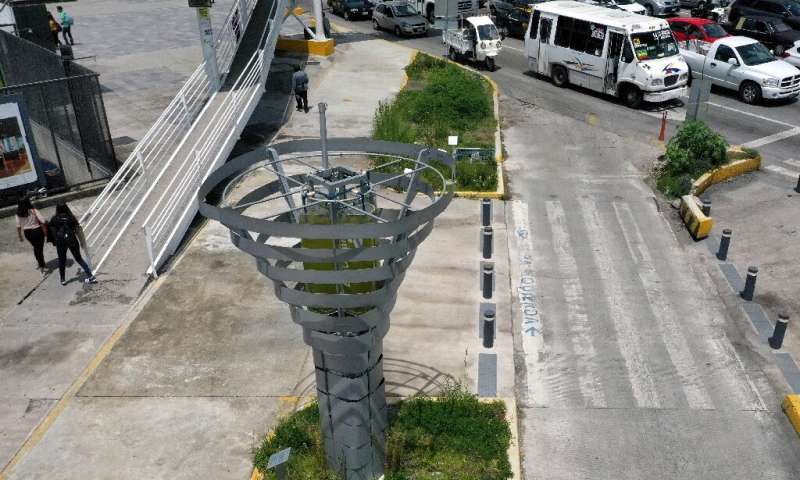Trees are the best organisms for cleaning the air on the planet, but they need two things to grow: time and space.
BioUrban are artificial trees that reduce pollution like 368 natural trees.
The structure, designed by a Mexican startup, is a metal tower that uses microalgae to clean the air of CO2 and other pollutants, returningtechnology pure oxygen.
A little more than 4 meters high and almost 3 meters wide, weighing one ton, the device is a kind of cross between a large tree and a postmodern sculpture. It has a central trunk that acts as a pivot to a sort of metal spiral that constitutes the crown.

“What the system does through this technology is suck in polluted air and use biology to develop a natural process of photosynthesis. Just like a real tree,” says James Ferrer, one of the founders of BiomiTech, the company that presented the artificial tree.
Pollution, Mexicans know something
Mexico City is a megalopolis that covers an area populated by over 20 million people. A sea of people daily plagued by forecasts on air pollution. The situation is serious, the product of emissions from over 5 million cars, many industries and even a volcano, Popocatepetl.
BioUrban 2.0 can make a difference in this scenario. Ferrer states that the objective of artificial trees is to extremely purify the air of specific areas (those crossed by pedestrians, cyclists or the elderly) where planting trees may not be an option.
It is not a race with trees, however.
Worldwide, over 7 million people die every year due to exposure to pollution according to the WHO. “We've decided that our job won't be to stand by and watch others die,” Ferrer says.
In its three years of activity, BiomiTech has "planted" 3 trees: one in the city of Puebla, in central Mexico, one in Colombia and one in Panama.
In the coming months other installations are planned in Monterrey, Mexico City and also in Turkey, and it would take many, many more.
Yet BioUrban does not have prohibitive costs for what it does: at the modest price of about € 50.000 each of these artificial trees does the work of a hectare of forest.
It cannot (and must not) replace real trees, but in areas where planting is difficult each of the devices produces clean air for 3000 people.

